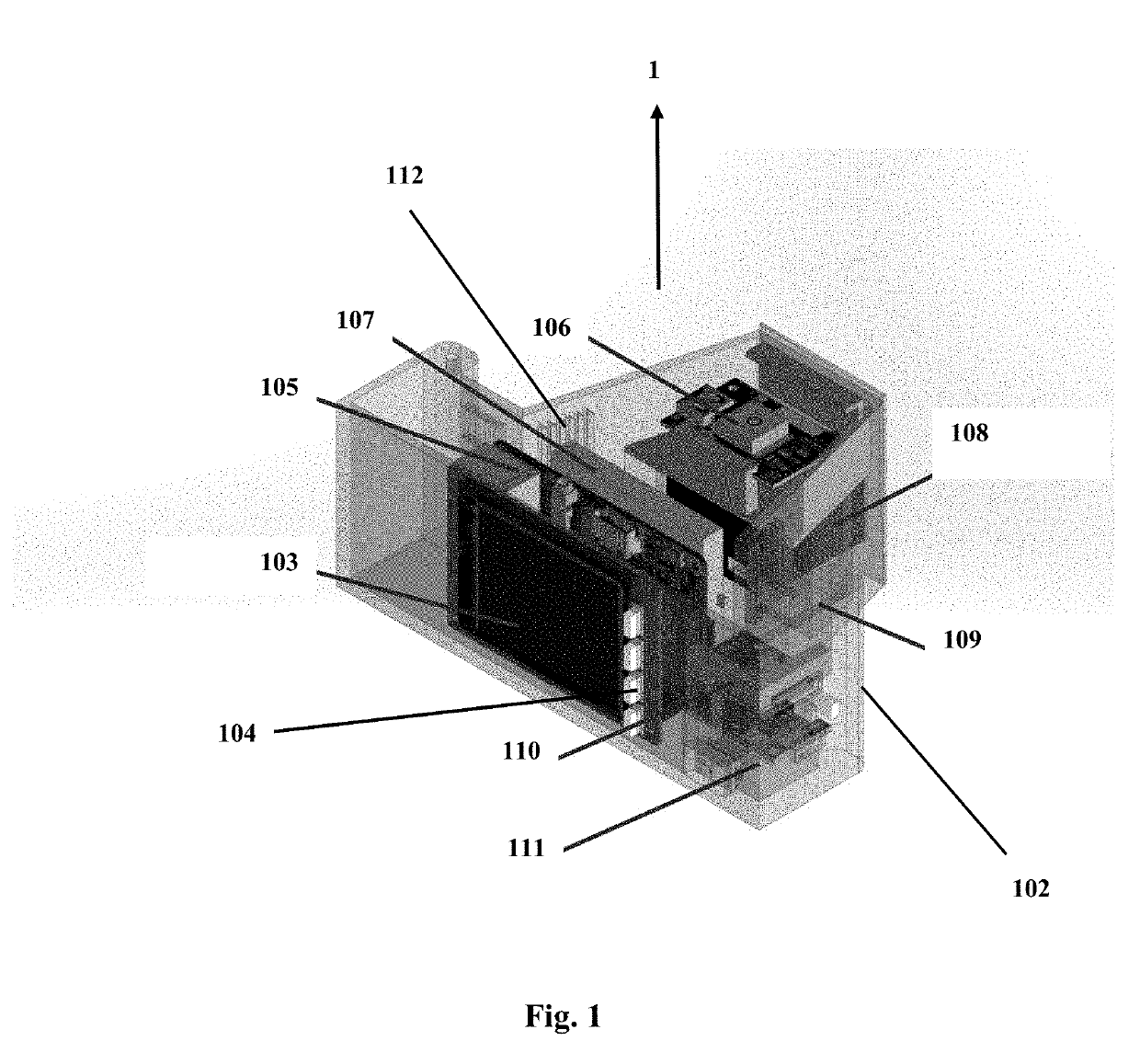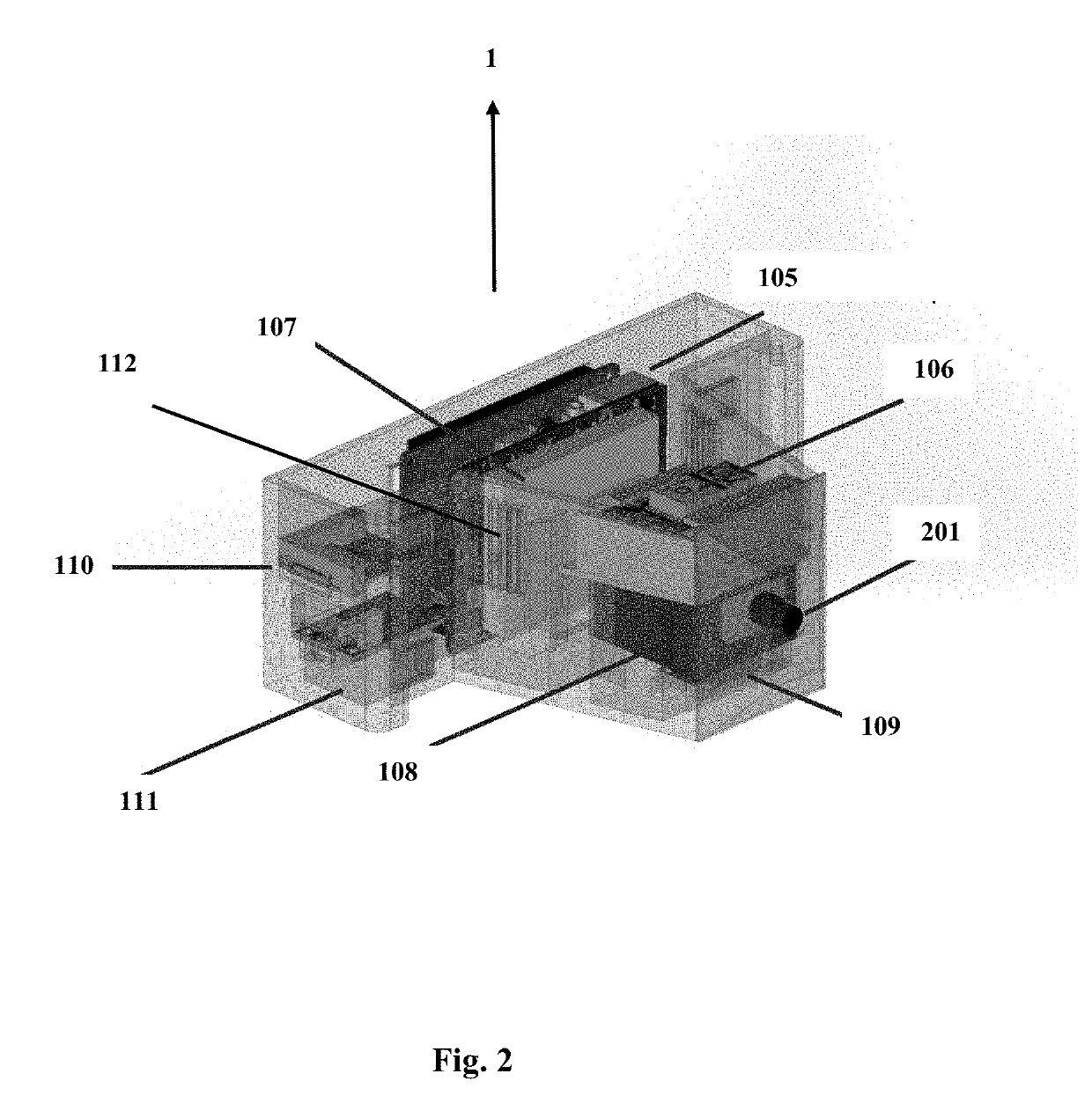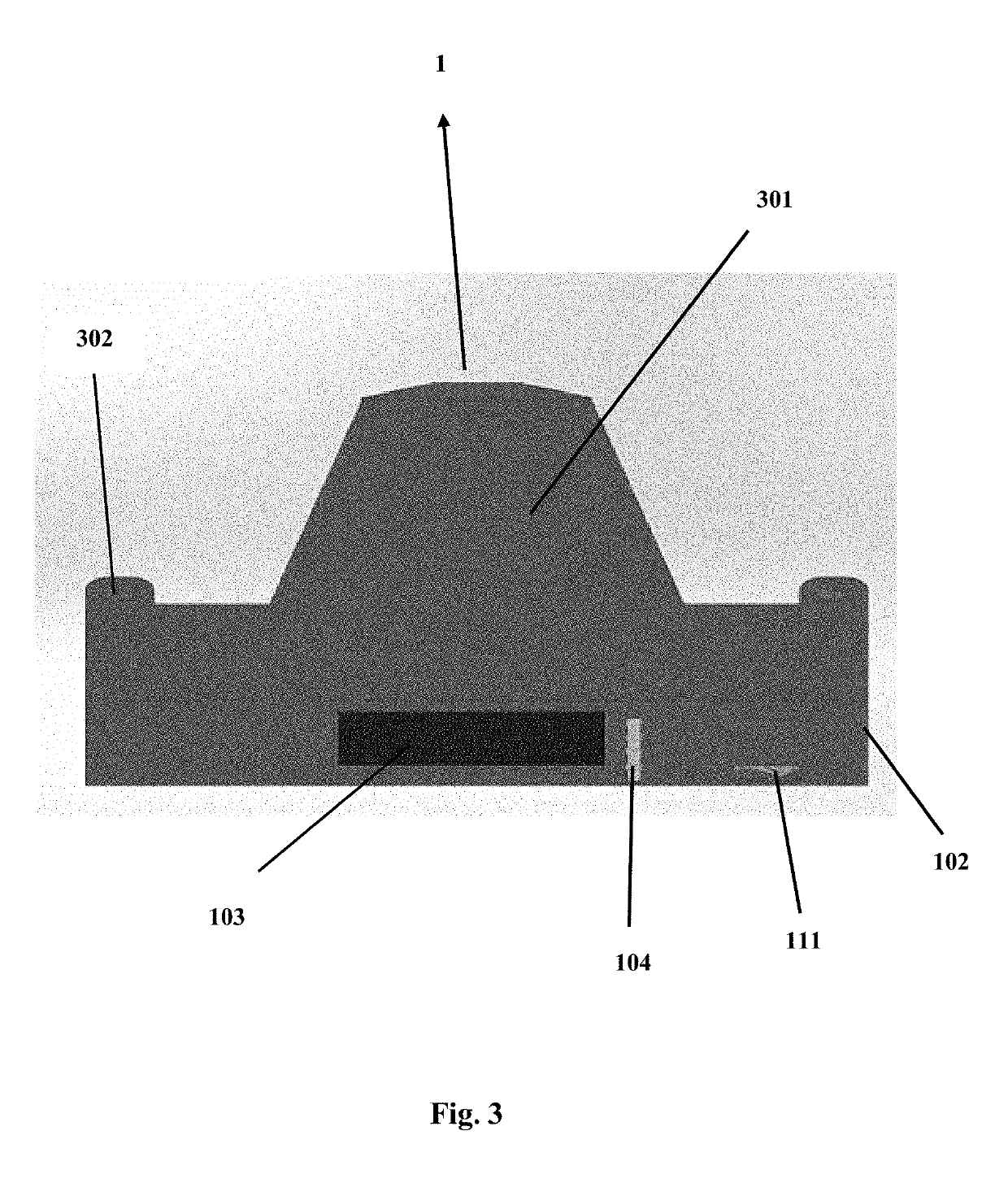Field remote sensing system for real-time quantification of total suspended solids (TSS) in surface waters from above-water spectral measurements
a remote sensing system and total suspended solid technology, applied in optical radiation measurement, multi-stage water/sewage treatment, instruments, etc., can solve the problems of inability to provide real-time, high cost of existing field instruments for the estimation of total suspended solids, and difficult use, etc., to achieve high signal-to-noise ratio, simple use, and high signal-to-noise ratio
- Summary
- Abstract
- Description
- Claims
- Application Information
AI Technical Summary
Benefits of technology
Problems solved by technology
Method used
Image
Examples
Embodiment Construction
[0013]In the following description, a portable remote sensing system (“RSS”) unit for real-time assessments of total suspended solids (“TSS”) in surface waters using above-water hyperspectral measurements is provided. The RSS unit provides TSS values in real-time, without the cumbersome and time consuming traditional laboratory methodology or the expensive and difficult to use existing in situ sensor technology. It should be noted that the RSS unit is not limited to assessing TSS in surface waters; it can also be used to detect and quantify other parameters of water quality such as chlorophyll, colored dissolved organic matter (“CDOM”), blue-green algae, etc.
[0014]The system combines a miniature high signal-to-noise ratio spectrometer coupled to a credit card-size computer, lens, rechargeable battery, GPS, display panel, motion sensor and dedicated software to derive TSS from above-water spectral measurements. The operating and analysis software incorporates one or more empirically ...
PUM
| Property | Measurement | Unit |
|---|---|---|
| right angles | aaaaa | aaaaa |
| reflectance | aaaaa | aaaaa |
| angle | aaaaa | aaaaa |
Abstract
Description
Claims
Application Information
 Login to View More
Login to View More - R&D
- Intellectual Property
- Life Sciences
- Materials
- Tech Scout
- Unparalleled Data Quality
- Higher Quality Content
- 60% Fewer Hallucinations
Browse by: Latest US Patents, China's latest patents, Technical Efficacy Thesaurus, Application Domain, Technology Topic, Popular Technical Reports.
© 2025 PatSnap. All rights reserved.Legal|Privacy policy|Modern Slavery Act Transparency Statement|Sitemap|About US| Contact US: help@patsnap.com



